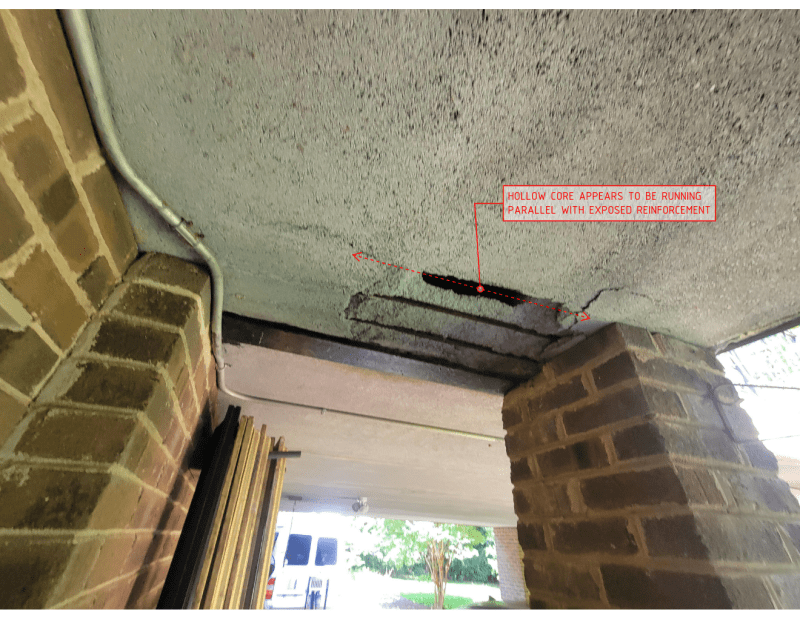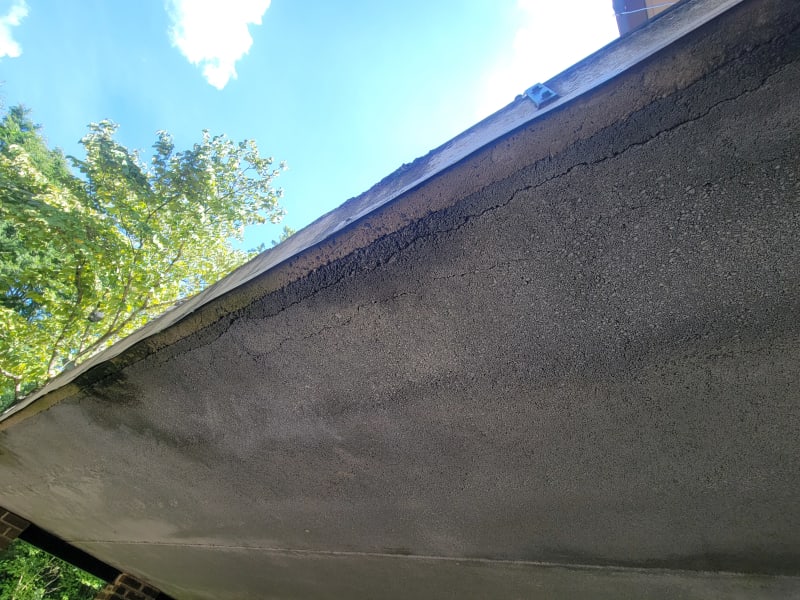Dumb question but do hollow core planks normally have stirrups in them? I can't seem to find any info on it.
Navigation
Install the app
How to install the app on iOS
Follow along with the video below to see how to install our site as a web app on your home screen.
Note: This feature may not be available in some browsers.
More options
Style variation
-
Congratulations cowski on being selected by the Eng-Tips community for having the most helpful posts in the forums last week. Way to Go!
You are using an out of date browser. It may not display this or other websites correctly.
You should upgrade or use an alternative browser.
You should upgrade or use an alternative browser.
Hollow Core Plank Stirrups?
- Thread starter grogannc
- Start date
- Status
- Not open for further replies.
They do not. I'm not even sure they can add them due to the casting methods. As far as I'm aware, these are extruded sections so I'm not sure how they would accommodate stirrups.
If you need more shear capacity, I've seen them fully grout the cores to increase the Ac.
If you need more shear capacity, I've seen them fully grout the cores to increase the Ac.
- Thread starter
- #3
- Thread starter
- #6
When I first looked at it, I thought they were strands too. And maybe they are but they would only be 4ft long strands as thats the length of the panel in that direction. I've never heard/seen of anything like that? And then the spacing is so tight, that would be something like 50 to 60 strands per panel. I attached another pic
- Thread starter
- #7
- Thread starter
- #9
The planks are 4ft wide x 24 ft long and the exposed steel runs in the 4ft direction. I think I have seen this one other time but I can't for the life of me remember which project. Its definitely odd but there's got to be some strands in the 24ft direction or it wouldn't still be standing.
grogannc said:The planks are 4ft wide x 24 ft long and the exposed steel runs in the 4ft direction
But the hollow core appear to be running parallel with the exposed reinforcement.

Hollow core panels are typically ONLY reinforced in the long direction (span direction), with no transverse rebar.
- Thread starter
- #11
That picture is a little misleading-I should have said, the holes are not circular, more rectangular, the holes run lengthwise (24ft span direction). I found a post on here where someone mentions mild steel reinforced planks encountered on a roof deck, which if so would I guess explain the "stirrups" running in the transverse direction but like jayrod said, they almost look like strands. Either way, this picture shows the difference in materials. The topping slab is overpoured around the edges and you can see the comparison to what looks like CMU (aggregate and cement, no fines) planks.


It would be possible, but the planks aren't really what I'd call extruded (or pultruded) like FRP shapes. The rebar or whatever is set into a form or something like that and the voids are in there however they get those in there (tied into the forms), and concrete is cast into it/onto it, vibrated (or not) and allowed to cure. Somewhere in there, the prestressing strands are tensioned and the concrete cures. Strands are released, plank is removed from the form, and trimmed.
I don't know the process all that well.....
What you have looks like "mild" reinforcement with some corrosion and spalling. It doesn't look like DOX plank (unless they put some parging on it that makes it look continuous on the bottom surface). Depending on what this is, shoring, ripping off all the garbage concrete, scraping/brushing to clear any laitance, wetting and bonding agent, concreting and fully grouting the cores with a bonding agent (where possible) or something similar that "feels" like overkill but isn't that much work given the small area, could be entertained.
Wait, what was the question again?
It's probably possible to do shear reinforcement in a plank, but it's out of favor and "all stops" are pulled out to avoid doing it, by the precaster.
I kind of wonder if the span direction is 24' and the plank is 4' wide. What's the depth. Alternately, is that some kind of "ceiling" with rebar in it for no particular reason and the true structure is above it? You could give it a go with a Profometer to see if you can find rebar going the other direction, but I wonder with that close a bar spacing going the other way it'll effectively block the rebar "above" it, if it's there.
I don't know the process all that well.....
What you have looks like "mild" reinforcement with some corrosion and spalling. It doesn't look like DOX plank (unless they put some parging on it that makes it look continuous on the bottom surface). Depending on what this is, shoring, ripping off all the garbage concrete, scraping/brushing to clear any laitance, wetting and bonding agent, concreting and fully grouting the cores with a bonding agent (where possible) or something similar that "feels" like overkill but isn't that much work given the small area, could be entertained.
Wait, what was the question again?
It's probably possible to do shear reinforcement in a plank, but it's out of favor and "all stops" are pulled out to avoid doing it, by the precaster.
I kind of wonder if the span direction is 24' and the plank is 4' wide. What's the depth. Alternately, is that some kind of "ceiling" with rebar in it for no particular reason and the true structure is above it? You could give it a go with a Profometer to see if you can find rebar going the other direction, but I wonder with that close a bar spacing going the other way it'll effectively block the rebar "above" it, if it's there.
I've seen mild reinforcement in older vintage HC plank, but in that case it was parallel to the strands at the edge of the plank.
I can't really envision a need for transverse reinforcement unless they had partial length voids and solid cast ends for higher shear capacity. In that case they might throw in some transverse bars in the solid end section for T&S reinforcement. But the photo seems to show the transverse bars under a void, so apparently it's not solid at the ends.
I really dislike HC planks exposed to the exterior. The deterioration is often hidden from view, and by the time it's noticeable it's too far gone.
I can't really envision a need for transverse reinforcement unless they had partial length voids and solid cast ends for higher shear capacity. In that case they might throw in some transverse bars in the solid end section for T&S reinforcement. But the photo seems to show the transverse bars under a void, so apparently it's not solid at the ends.
I really dislike HC planks exposed to the exterior. The deterioration is often hidden from view, and by the time it's noticeable it's too far gone.
DTS419 said:ACI 318-19 has raises the bar with shear reinforcement requirements and I have questioned how some precast products like hollow cores get by without any Av,min. But then again, most hollow core is prestressed which can help with shear
At the plank ends of pretensioned hollow core planks the strand is not developed, so whilst the plank is prestressed, it is not at its ends where shear is at its maximum.
- Status
- Not open for further replies.
Similar threads
- Replies
- 3
- Views
- 4K
- Replies
- 7
- Views
- 901
- Locked
- Question
- Replies
- 1
- Views
- 545
- Locked
- Question
- Replies
- 4
- Views
- 2K
- Question
- Replies
- 0
- Views
- 3K
